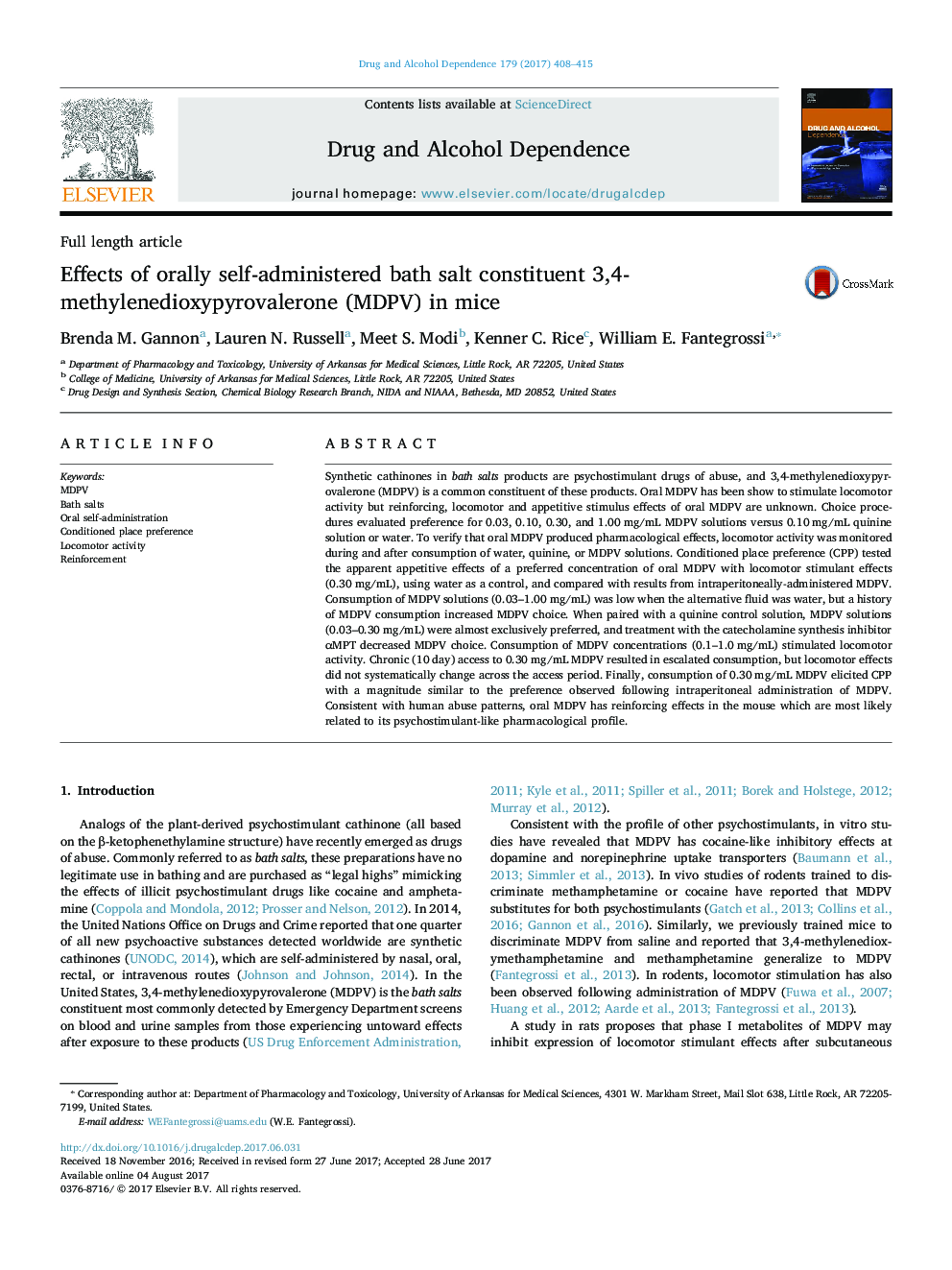| Article ID | Journal | Published Year | Pages | File Type |
|---|---|---|---|---|
| 5119970 | Drug and Alcohol Dependence | 2017 | 8 Pages |
â¢3,4-methylenedioxypyrovalerone (MDPV) solutions are consumed by mice, and produced profound locomotor stimulant effects.â¢Consumption of MDPV “escalates” over days, but locomotor effects decrease over days.â¢History of forced MDPV consumption increased MDPV choice over a water alternative.â¢MDPV is preferred over quinine; preference is abolished by catecholamine depletion with alpha-methyl-para-tyrosine (αMPT).â¢Intake of MDPV induced conditioned place preference, relative to injection (IP)-administered MDPV.
Synthetic cathinones in bath salts products are psychostimulant drugs of abuse, and 3,4-methylenedioxypyrovalerone (MDPV) is a common constituent of these products. Oral MDPV has been show to stimulate locomotor activity but reinforcing, locomotor and appetitive stimulus effects of oral MDPV are unknown. Choice procedures evaluated preference for 0.03, 0.10, 0.30, and 1.00 mg/mL MDPV solutions versus 0.10 mg/mL quinine solution or water. To verify that oral MDPV produced pharmacological effects, locomotor activity was monitored during and after consumption of water, quinine, or MDPV solutions. Conditioned place preference (CPP) tested the apparent appetitive effects of a preferred concentration of oral MDPV with locomotor stimulant effects (0.30 mg/mL), using water as a control, and compared with results from intraperitoneally-administered MDPV. Consumption of MDPV solutions (0.03-1.00 mg/mL) was low when the alternative fluid was water, but a history of MDPV consumption increased MDPV choice. When paired with a quinine control solution, MDPV solutions (0.03-0.30 mg/mL) were almost exclusively preferred, and treatment with the catecholamine synthesis inhibitor αMPT decreased MDPV choice. Consumption of MDPV concentrations (0.1-1.0 mg/mL) stimulated locomotor activity. Chronic (10 day) access to 0.30 mg/mL MDPV resulted in escalated consumption, but locomotor effects did not systematically change across the access period. Finally, consumption of 0.30 mg/mL MDPV elicited CPP with a magnitude similar to the preference observed following intraperitoneal administration of MDPV. Consistent with human abuse patterns, oral MDPV has reinforcing effects in the mouse which are most likely related to its psychostimulant-like pharmacological profile.
